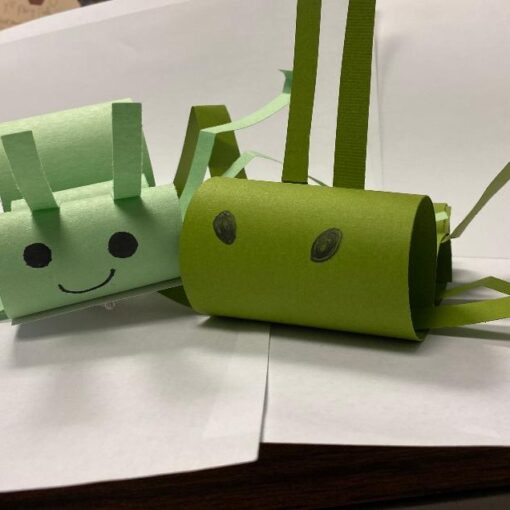Weekend Fun: Make a Mixed Media Junk Collage
Did you know that you can create art with junk? It’s called “upcycling” because it transforms something that would be recycled or thrown out into something creative.
Some artists who upcycle create works that are like paintings until you look close. Others make furniture with magazines or newspapers – there is a paper house in Rockport, MA, that is filled with furniture made from old newspapers. Still others make sculptures from plastic spoons, bottle caps, metal trash, and paper that are intriguing shapes and forms or may look like things from real life.
Go on a treasure hunt and collect junk from around your house and yard – check with your family members before using it, just in case it isn’t junk to them! – and then make your own junk collage with glue and paint.
What you need:
• Magazine ads, junk mail, old newspaper, bottle caps, corrugated cardboard, cereal box, various types of paper, metal, wire, origami rejects, stickers, pencil stubs, scraps of wrapping paper, etc.
• White glue
• Paint brush or sponge brush
• Cosmetic sponge
• Acrylic paint (see the Kids’ Blog from August 10 if you need a recipe to make your own paint)
• A large piece of sturdy cardboard like a cereal box or watercolor paper for the collage base
• Scissors
• Ink pads
• Markers and/or crayons
What you do:
• Paint a background color on the base and let it dry.
*In the sample below, the background color was a butterscotch yellow. Can you see it peeking through near the top and sides?
• Assemble your junk.
• On the sturdy cardboard or watercolor paper, arrange the junk pieces and move them around to see what works for you – what do you like? Try tearing pieces off and using different things to get ideas, but don’t glue anything yet.
• Choose some papers and glue them to the base by brushing glue on both the base and the item you want to glue.
*In the sample below, the background papers were from a cooking magazine. Can you see parts of recipes? A green pot that looks like a sugar bowl? Some food words?
• Next add some dimensional pieces.
*In the sample below, the dimensional pieces were a cut-up CD, a bottle cap, a googly eye, some coins, some chipboard letters and frames, a paper tag on a string, and some corrugated cardboard that had paint on them. There is a craft stick as well, but it got covered up as items were added – yet it helps the photo of the pheasant pop from the background.
• Use repetition: Repeat the same colors, shapes, types of junk.
*In the sample below, there are two coins, two borders (one at the top and one at the bottom), repeating circle shapes, and eyes (see the eyes of Ben Franklin on the piece of play money? And one of the coins looks like an eye. The repeating circles and eyes are on a diagonal from the top left to the middle right). There are also three pieces of corrugated cardboard triangles that form a triangle for your eyes.
• Watch your collage grow as you add pieces. Think of shapes and color as you work. It may be abstract or it may start to look like something familiar, like an animal or a face, or it may look like a “seek and find” puzzle.
• Tip: Add a little water to some glue in a separate container or paper cup and use it to brush over the top of your items once you glue them. This will keep all the corners and bits down.
• Once you like the arrangement of junk, add a little acrylic paint to the watered down glue to make a “color wash,” and paint over the entire collage. This will unify all the various bits and pieces. Tip: Test the color wash on scrap paper first to see if you like it. Is it too pale? Too dark?
• Finally, when the color wash is dry, choose something to be a focal point, something that will draw your eye to it in the collage.
*In the sample below, there is a photo of a pheasant crossing a road (taken in Franklin Township). It is placed so it appears that the eyes at top left are looking at it.
• When your collage is complete, use a cosmetic sponge to ink around the edges of the collage.
• Use a marker to make tiny marks around all four edges. The inking and marking will act as a frame for your work of art.
Find a box to story your unused junk for another day!




